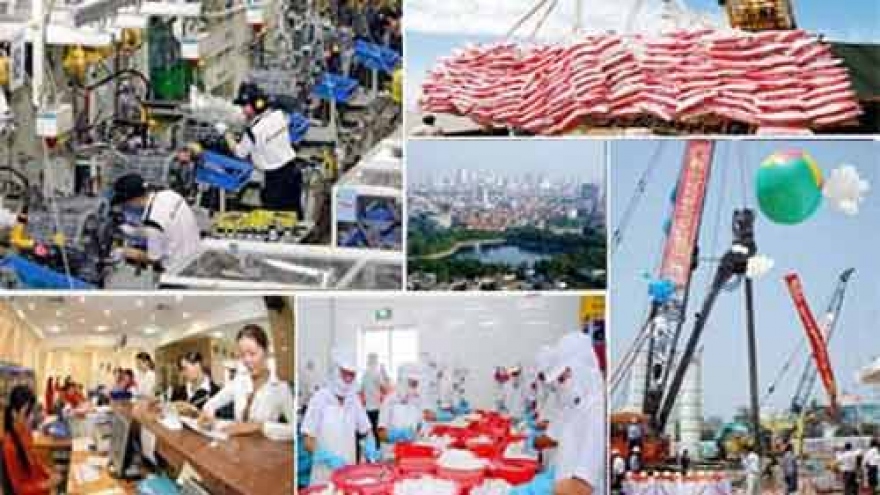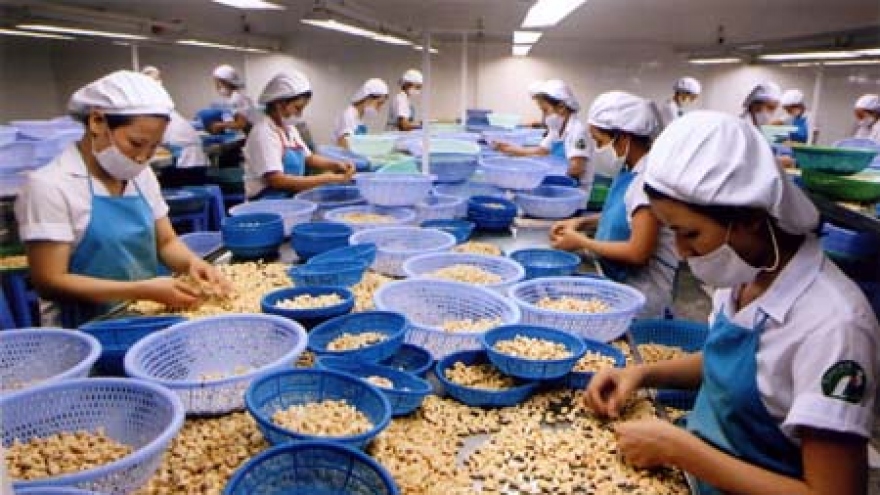HSBC: No need to worry about TPP
There is no need to worry about the Trans-Pacific Partnership (TPP) trade pact which U.S. President-elect Donald Trump said would be scrapped after he takes office, as Vietnamese enterprises can benefit from other free trade agreements.
 |
“We may now focus too much on the possibility of the death of the TPP to unnecessarily forget that negotiations for other free trade agreements (FTAs) are still going on,” said Pham Hong Hai, chief executive officer of HSBC Vietnam.
A bigger deal that can be mentioned is the Free Trade Area of the Asia Pacific (FTAAP), an initiative nurtured for 20 years by the Asia-Pacific Economic Cooperation (APEC) forum, linking 21 economies around the region including China and the U.S. The FTAAP covers 60% of global GDP and 50% of world trade. The bulk of the FTAAP document is complete and the final chapter is being worked on,” he noted.
Hai added that a smaller scale Asia focused deal is the Regional Comprehensive Economic Partnership (RCEP) which links the world’s three largest consumer markets (China, India, ASEAN), creating a free trade area between 16 Asian economies with around US$22.4 trillion of GDP and about US$10 trillion of total trade.
This deal will be particularly advantageous for ASEAN as it will reduce the incongruity across pre-existing FTAs and thereby strengthen the appeal of the region as a production base.
“I believe the new U.S. president has a mandate to boost U.S. growth and jobs and we at HSBC believe that free trade based on strong rules helps to boost prosperity. With or without the TPP, the U.S. is still a very important trade partner of Vietnam and Vietnam businesses need to watch out the movements closely while keeping a going forward spirit to take advantage of all the agreements that are in the pipeline. On the other hand, building a strong domestic market is the key that we need to do in parallel,” Hai said.
The report said there are many unknowns following Donald Trump’s upset election win. However, one thing is certain: the TPP is unlikely to be passed, and the U.S. is likely to become more protectionist.
Negotiations for the RCEP are on-going and the 15th round of negotiations concluded last month. The RCEP comprises 10 ASEAN countries, and their trade partners China, India, Japan, Korea, Australia, and New Zealand.
As the first pan-Asia free trade deal, it boasts a list of impressive statistics, such as covering roughly half of the world’s population and nearly 30% of global GDP.
The RCEP covers the usual components of a free trade deal, such as trade in goods, services, investment, and intellectual property rights protection. However, there are already warning signs that the final treaty will be watered down, in particular due to India’s fears about its already large trade deficit with China ballooning further and Japan’s reluctance to open its agricultural sector.
The final agreement will likely be replete with country-specific exemptions and many tariff lines may remain intact.
Despite drawbacks, the RCEP should help boost trade volumes across Asia and spur investment in new supply chains. The deal will be particularly advantageous for ASEAN, as it will reduce the incongruity across pre-existing FTAs and thereby strengthen the appeal of the region as a production base, according to the HSBC report.
Moreover, by connecting the world’s three largest consumer markets, namely China, India, and ASEAN, the RCEP will offer a new “south-south” template for growth that can partly offset subdued imports and investment from the West.
The RCEP effectively allows convergence between the agreements and should help attract foreign companies to base production in ASEAN, including Vietnam.
“Recall that in addition to ASEAN’s outward FTA, the region has ambitious plans for internal integration, namely, through the ASEAN Economic Community (AEC).
We estimate the agreement will boost baseline GDP by 5% through 2030, thanks to a break-down in investment barriers and services liberalization, particularly across financial services,” the report said.
It is clear that the RCEP has clear drawbacks: the final agreement is likely to show significant exemption lists and long timelines for tariff elimination. However, it is, nonetheless, a welcome development for the region with the Doha-round in the World Trade Organization moving at a glacial pace and with the TPP’s implementation all but off the table for now.



